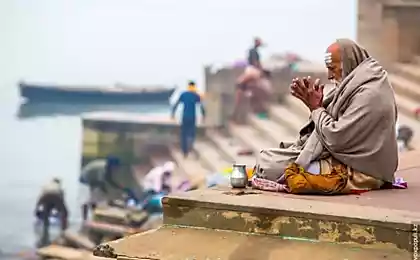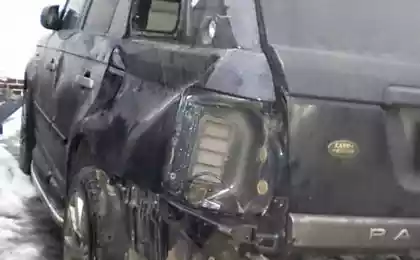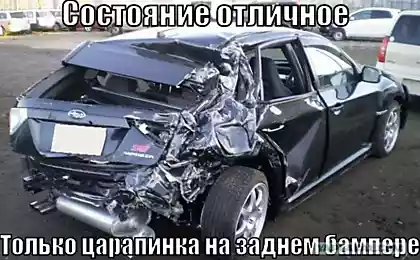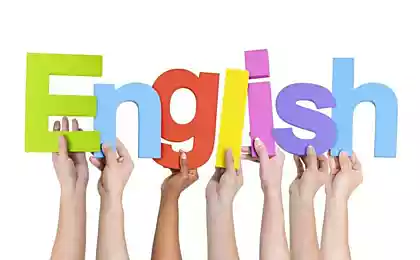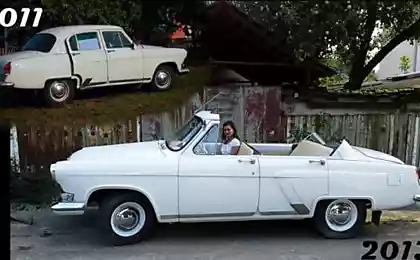1088
Five stories, or to whom to say thank you
July 20, 1981 in the list of options Mercedes-Benz S-Class (body W126) appeared curious line - "airbag". Since then, the press service of the German concern is this day considered the birth date of "Air-bags».
The claim is at least debatable. That Americans can reasonably argue, they say, on the serial Oldsmobile Toronado inflatable bags, shoots from the steering wheel hub, already made its debut in 1973! The Germans did not give up, fending off the fact that the 126-m body "Air bags" for the first time to work on the modern scheme, that is, in collaboration with pretensioners. But stop-stop. We're not going to engage in polemics, though belittling someone's contributions to the noble mission of reducing the number of victims of road accidents. On the contrary, the current date seemed to us worthy of the occasion to remember the good word of the people had a hand in the most important, in our opinion, the achievements in the field of automotive safety.
17 photos + text
taken away
Triplex
First of all - masks
- Damn, these iron monsters! - Crumpled morning paper, Edward Benedict stood up from the table. - In this poor little life is now all down the drain ...
French chemist was not exaggerating. The newspapers all chilling detail yesterday painted road incident in which a young girl suffered. Shards of broken glass unfortunate disfigured his face ...
Photo 1. The world's first mass car with laminated glass - Ford A 1928 model year.

However, for the beginning of the 20th century, as it was in 1903, similar stories, alas, become quite commonplace affair. You could even say that the first glazing machines are the main source of danger for motorists. The Phantom Menace dormant and small cobblestone and innocent hole in the road. From shock and even strong vibrations fragile glass shatters into many very sharp pieces, representing more than a real threat not only to health, but also the lives of the driver and passengers. Nothing can be done - that it pays for hobby motors, having won the French elite!
And then it dawned on Benedict. Lucky chemist remembered how just a couple of weeks ago in our own laboratory dropped a glass tube, which grohnuvshis on the floor from a height of more than two meters cracked, but not broken. It was found that the solution in the vessel was kept nitrocellulose. The whole structure of weathered, leaving on the surface a thin protective film, which is like glue, holding glass fragments, not allowing them to scatter.
Edward immediately locked himself in the laboratory and did not leave out a day without a break, experimenting with different variants of the protective coating. He did it! Connect the two glass layer of nitrocellulose, Benedict created the world's first triplex. "I believe my invention has great potential for future use" - wrote a Frenchman in his diary.
He was not wrong. Really soon wired glass is widely used ... on the battlefield. During the First World of laminated glasses manufactured gas masks. But the turn to cars not immediately - after initially triplex was quite expensive to manufacture. But the laurels popularizer of safety glass with a French chemist can rightly divide the American automobile magnate Henry Ford.
It so happened that during the development of the Model A - mate of the legendary "Tin Lizzie" - one of Ford engineers seriously injured break the glass. Then Henry, provides much temper ordered that all models were equipped with the company's safety glass. That is why the December 2, 1927 - the date of the debut of Ford A - can be regarded as the birthday of the automobile and triplex. The reputation and the reputation of Ford, owner of the largest at the time of the world, were so high that soon all the competitors got the same glazing. In short, thank you, Henry!
Photo 2. Today frustrated Lobovyk looks like. Agree not scary. A hundred years ago it was different ...

Wipers
Prescription Miss Anderson ...
- Listen, my dear, why did you open the window? Outside shower room and drops fly!
- Excuse me, ma'am, but otherwise I just do not see the road!
By today's standards, Mary Anderson can be called a real business-woman. Even in a fairly young age, a native of Alabama, along with her sister and early widowed mother run the family apartment house. When Mary turned 27, she moved to California, where he bought a farm, a vineyard and began operations with real estate. Its already strong financial position has been strengthened only after receiving an inheritance from her aunt died. With this money in 1902 to Miss Anderson has decided to take a trip to New York - to marvel at the wonders of the "Big Apple».
With the weather it is clearly out of luck - the rain came down in torrents. And Mary drew attention to the strange behavior of drivers who are constantly stopped to wipe away the drops from the windscreen.
Photo 3. Marie Andersson himself. For now familiar car wipers need to thank this woman is.

"Poor man, it must be so uncomfortable ..." - thought the American compassionate and guided not so much by greed as philanthropy, I decided to help. Despite the lack of engineering education, she scribbled on a paper chart "devices for cleaning windows." Draft she took in the engineering office, and only then on a professionally written drawings in the workshop produced a fully functional product. It was not just a rubber brush, manually controlled from the cabin by a lever. Main feature wiper Mary Anderson - a system of springs and balances, whereby the brush fits snugly against the glass.
November 10, 1903 the US Patent Office has issued a request under the number 743 801 - Window Cleaning Device. Mary tried to offer his invention of automobile companies, but it only raised a laugh. "Only a woman would dream of such a crazy idea - laughed newspapermen. - Well, what idiot would be distracted from driving, in order to enable the wiper? "It seems to wipe the glass to stick his hand out the window - by the way, is extremely common in those days the way - much more convenient and safer.
Photo 4. The patent scheme "Steklochischayuschego device" Miss Andersson.

Mary did not persist and returned to profitable real estate, and the patent has expired safely 743801 November 10, 1920-th. By that time, "Miss Anderson idiotic idea" has become a basis for the design of mechanical blades, appeared in almost all American cars. What can I say - thank you, Mary!
Picture 5. Note - This Ford T 1917 model year equipped with a mechanical wiper. Moreover, at the time the patent Marie Andersson has not ended - could have made a worthy reason for litigation.

Airbags
Torpedo attack
You never heard of Dr. Clare Smith? Ask my wife - she may know. The fact that Mr. Smith - the founder of one of the most famous in the United States plastic surgery clinics. But he went down in history not only as a specialist for injection into a woman's body from silicone and botox. Back in the 20s of the last century, Dr. Smith was in the forefront of specialists raised questions about the safety of the car. He first drew attention to the fact that many elements of the passenger compartment from pens to ashtrays were a potential threat to the occupants. "A small collision, and even the rear view mirror with sharp edges can become a piercing-cutting weapon!" - Appealed to the common sense Smith car companies.
Photo 6.

Convince was only Walter Chrysler, is not only a successful businessman, but also a gifted engineer. So on the production Dodge Six 1937 model year were "drowned" door handles, rounded instrument panel and dash a little lifted up, so that in case of accident reduce the risk of knee injuries. Needless to say that innovation had success with customers ?! Dips and another attempt to secure at least a little car, launched in the mid-50s the company Ford. The proposed option is now Life guard - in fact soft padding lining the dashboard and steering wheel - not in demand.
Photo 7. Contrary to popular misconception the first production car with airbags was not Mercedes-Benz S-klasse, and Oldsmobile Toronado 1974 model year.

However, the lining in any case seemed half-measure - with the growth of the power and speed of vehicles, the driver and passengers needed a more substantial protection. Serene spring day in 1952 it became clear the former US Navy engineer John Hetrick.
8. In addition to the photo Toronado, cushions were placed on the Buick Electra (pictured), as well as Cadillac DeVille. However, after 1978, an unpopular option disappeared from the catalogs of General Motors.

Together with his wife and daughter, he was returning home on his Chrysler Windsor. Just for a moment John was distracted by a deer left on the forest edge, and noticed too late hefty cobblestone middle of the road. Slammed on the brakes, the steering wheel to the right and overweight Chrysler falls into a ditch ... In Fortunately everything turned off lightly. But Hetrick understand - whether the speed a little higher and it could be over a much sadder ...
Man resourceful and savvy, he began to think, how to protect the occupants from hitting the steering wheel hard, and the front panel. At first, he tried to use a material with properties resembling ordinary sponge, but a softening effect was insufficient. Next idea is closer to the truth - fabric pillow, filled with air. That's just how to pump her for a moment, saving gas? And then Hetrick remember the case of the military service. Once out of combat torpedoes, covered with a tarpaulin before loading the ship left the charge of compressed air - dense fabric instantly turned into a huge ball. "This is it!" - John and realized only a few months presented a working model of the airbag, and August 5, 1952 applied for a patent. Paperwork cost him about $ 250, but the benefits of his invention former marine engineer and has not received. Security at that time were not interested in automotive companies.
Photo 9. Executive Mercedes-Benz S-klasse (W126) - the first car in the world where airbags work together with pretensioners.
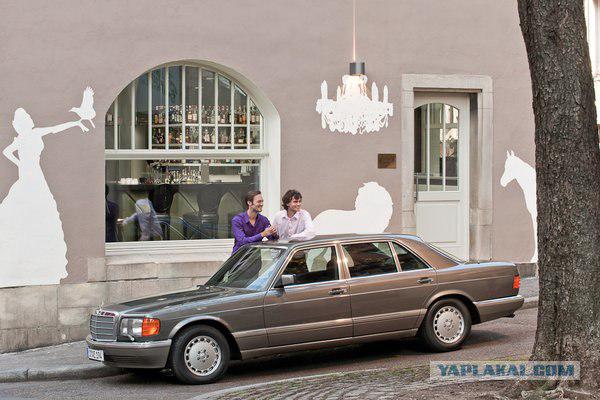
It took a controversial book lawyer Ralph Nader, questioned the level of protection for all US models to deal headway. It was only when President Lyndon B. Johnson declared a crusade for the safety car on airbags remembered in Detroit. The first production model with Air-begami Oldsmobile Toronado was the 1974 model year.
Picture 10. Today "air bags" is even minicars, and sometimes in the most unusual places. The picture shows the airbags to protect rear passengers heads Toyota IQ.

Three-point seat belt
From the creators of a catapult ...
- You have an excellent track record, Mr. Bolin, I think you are suitable our company!
The tall, bald patches with a clear 38-strong Swedish only timidly shook hands with HR-managers Volvo.
- Thank you, of course. But I hope you know that I had not had to deal with cars? The SAAB, I, you know, developed the system bailout from the aircraft ...
- So much the better, so the machines can handle even more so!
Well, the boss knows best, Nils decided and began operations at the new location with the most simple in his view - to improve seat belt.
Picture 11. The first mass-production car with a seat belt - Nash Ambassador 1950 model year.

Picture 12. The first mass-production car with a seat belt - Nash Ambassador 1950 model year.

According to estimates omniscient statistics belts saved over a million lives, with name the person who invented such a useful device is incredibly difficult - or rather, it is almost impossible. The fact that it is difficult to say when the belts were first introduced on cars. For a long time it simply did not see the need. Here in airplanes - is another matter! Otherwise the pilot when the simplest of maneuvers risked banal fall out of the cab. But why, pray tell, seat car, which goes on the earth? The first riders think about it - in the 20s, some American pilots were secured simplest collar straps to securely fix the body in tight turns. Around the same time sounded the alarm and the doctors, calling the automakers think about installing belts, which could significantly reduce injuries in the event of an accident. In vain ...
Picture 13. Buckle up! On the promotion of their safe invention Volvo spent disproportionately more funds than to develop it.

Only after the war, in 1949, to be precise, the model of the American firm Nash Motors - Ambassador and Statesman - got rare by today's standards the thigh (!) Belts. In any case, careless buyers ignored a novelty. The same fate awaited the initiative of Ford and Chrysler, in 1955, proposed a seat as an option. "Wacky" webbing not order one! It is difficult to say what would have ended if about the same time, the president of the Swedish Volvo Gunnar Engellau decided to focus on the security of proprietary chip from Gothenburg.
The new scope of work entrusted to the care already familiar to us Nils Bohlin. I must say, a two-point diagonal strap had already entered the serial equipment of Volvo, however, according to Niels she was far from perfect. Indeed, in the event of a collision the driver happened dives under the belt, from which the degree of protection is significantly decreased. Bolin had no doubts - it is necessary to consolidate and pelvis of the driver's body. But how? Add another belt structure? Excluded! And then former specialist catapults predlozhid ingenious and simple solution - V-shaped strap that secures the body at three points. It is easily buttoned and regulated efficiently distributes energy during an impact, and most importantly, "duck" under this at all desire is impossible. Belt design Bolin appeared as standard equipment on the Volvo PV544 in 1959.
It proved much more difficult to convince everyone of the need tacked. The company has spent millions of Gothenburg on advertising, Nils Bohlin conducted numerous awareness-raising seminars and lectures, and the Swedish racer stunt Orvar Aspholm publicly turned serial VOLVO and even participated in crash tests at parking speeds, to prove to all high performance and undoubted benefit of seat belts . If not immediately, but all these steps eventually led to the expected results - because today are equipped with seat belts, even taxis. So poblagodrim Nils Bohlin for his invention, and Volvo - for persistence.
Picture 14. Elegant Nils Bohlin at bow tie shows his landmark invention. For the creation of the three-point seat belt Swedish engineer awarded inclusion in the "World Automotive Hall of Fame."

ABS
Useful romantic
- Do not try to argue! I made my decision - I'm leaving!
Partners and subordinates, as it seemed, with some sympathy looked at his now former boss. And in general, their surprise and even bewilderment is understandable. Just Gabriel Voisin, one of the most talented engineers and designers of his era, announced that it no longer intends to build airplanes.
Just think after all the previous life of the Frenchman has been linked with the sky! Back in 1906 together with his brother Gabriel Charles organized an aviation company, and only a year later, they built the first airplane. Well established production biplanes fighting during the First World War made Voisin rich. However, Gabriel also was a man of very sentimental. That the production of aircraft, he tied for the reason that the machine, the name of his name, sowing death on the battlefield ... It was then decided to go and Voisin automobile business. And he came up to the car with the aircraft standards - terrestrial model Voisin were large, multi-cylinder, powerful, technically advanced, reliable and very scary expensive.
Picture 15. Gabriel Voisin in his youth

Yet perhaps the main invention Voisin has air roots. At the end of the 20s to the designers of aircraft was a serious problem - with increasing power grew and aircraft landing speed. Conventional brakes and tires are no longer maintained loads - landing gear blocked that often led to accidents. And Voisin suggested prototype of the anti-lock braking systems. Fully mechanical design was a set on one axis with the drum gear to the flywheel. When wheels spin valve is opened through which the brake fluid is vented to a special tank - thus the system pressure dropped slightly and the wheel continued to spin.
Source:
The claim is at least debatable. That Americans can reasonably argue, they say, on the serial Oldsmobile Toronado inflatable bags, shoots from the steering wheel hub, already made its debut in 1973! The Germans did not give up, fending off the fact that the 126-m body "Air bags" for the first time to work on the modern scheme, that is, in collaboration with pretensioners. But stop-stop. We're not going to engage in polemics, though belittling someone's contributions to the noble mission of reducing the number of victims of road accidents. On the contrary, the current date seemed to us worthy of the occasion to remember the good word of the people had a hand in the most important, in our opinion, the achievements in the field of automotive safety.
17 photos + text
taken away
Triplex
First of all - masks
- Damn, these iron monsters! - Crumpled morning paper, Edward Benedict stood up from the table. - In this poor little life is now all down the drain ...
French chemist was not exaggerating. The newspapers all chilling detail yesterday painted road incident in which a young girl suffered. Shards of broken glass unfortunate disfigured his face ...
Photo 1. The world's first mass car with laminated glass - Ford A 1928 model year.

However, for the beginning of the 20th century, as it was in 1903, similar stories, alas, become quite commonplace affair. You could even say that the first glazing machines are the main source of danger for motorists. The Phantom Menace dormant and small cobblestone and innocent hole in the road. From shock and even strong vibrations fragile glass shatters into many very sharp pieces, representing more than a real threat not only to health, but also the lives of the driver and passengers. Nothing can be done - that it pays for hobby motors, having won the French elite!
And then it dawned on Benedict. Lucky chemist remembered how just a couple of weeks ago in our own laboratory dropped a glass tube, which grohnuvshis on the floor from a height of more than two meters cracked, but not broken. It was found that the solution in the vessel was kept nitrocellulose. The whole structure of weathered, leaving on the surface a thin protective film, which is like glue, holding glass fragments, not allowing them to scatter.
Edward immediately locked himself in the laboratory and did not leave out a day without a break, experimenting with different variants of the protective coating. He did it! Connect the two glass layer of nitrocellulose, Benedict created the world's first triplex. "I believe my invention has great potential for future use" - wrote a Frenchman in his diary.
He was not wrong. Really soon wired glass is widely used ... on the battlefield. During the First World of laminated glasses manufactured gas masks. But the turn to cars not immediately - after initially triplex was quite expensive to manufacture. But the laurels popularizer of safety glass with a French chemist can rightly divide the American automobile magnate Henry Ford.
It so happened that during the development of the Model A - mate of the legendary "Tin Lizzie" - one of Ford engineers seriously injured break the glass. Then Henry, provides much temper ordered that all models were equipped with the company's safety glass. That is why the December 2, 1927 - the date of the debut of Ford A - can be regarded as the birthday of the automobile and triplex. The reputation and the reputation of Ford, owner of the largest at the time of the world, were so high that soon all the competitors got the same glazing. In short, thank you, Henry!
Photo 2. Today frustrated Lobovyk looks like. Agree not scary. A hundred years ago it was different ...

Wipers
Prescription Miss Anderson ...
- Listen, my dear, why did you open the window? Outside shower room and drops fly!
- Excuse me, ma'am, but otherwise I just do not see the road!
By today's standards, Mary Anderson can be called a real business-woman. Even in a fairly young age, a native of Alabama, along with her sister and early widowed mother run the family apartment house. When Mary turned 27, she moved to California, where he bought a farm, a vineyard and began operations with real estate. Its already strong financial position has been strengthened only after receiving an inheritance from her aunt died. With this money in 1902 to Miss Anderson has decided to take a trip to New York - to marvel at the wonders of the "Big Apple».
With the weather it is clearly out of luck - the rain came down in torrents. And Mary drew attention to the strange behavior of drivers who are constantly stopped to wipe away the drops from the windscreen.
Photo 3. Marie Andersson himself. For now familiar car wipers need to thank this woman is.

"Poor man, it must be so uncomfortable ..." - thought the American compassionate and guided not so much by greed as philanthropy, I decided to help. Despite the lack of engineering education, she scribbled on a paper chart "devices for cleaning windows." Draft she took in the engineering office, and only then on a professionally written drawings in the workshop produced a fully functional product. It was not just a rubber brush, manually controlled from the cabin by a lever. Main feature wiper Mary Anderson - a system of springs and balances, whereby the brush fits snugly against the glass.
November 10, 1903 the US Patent Office has issued a request under the number 743 801 - Window Cleaning Device. Mary tried to offer his invention of automobile companies, but it only raised a laugh. "Only a woman would dream of such a crazy idea - laughed newspapermen. - Well, what idiot would be distracted from driving, in order to enable the wiper? "It seems to wipe the glass to stick his hand out the window - by the way, is extremely common in those days the way - much more convenient and safer.
Photo 4. The patent scheme "Steklochischayuschego device" Miss Andersson.

Mary did not persist and returned to profitable real estate, and the patent has expired safely 743801 November 10, 1920-th. By that time, "Miss Anderson idiotic idea" has become a basis for the design of mechanical blades, appeared in almost all American cars. What can I say - thank you, Mary!
Picture 5. Note - This Ford T 1917 model year equipped with a mechanical wiper. Moreover, at the time the patent Marie Andersson has not ended - could have made a worthy reason for litigation.

Airbags
Torpedo attack
You never heard of Dr. Clare Smith? Ask my wife - she may know. The fact that Mr. Smith - the founder of one of the most famous in the United States plastic surgery clinics. But he went down in history not only as a specialist for injection into a woman's body from silicone and botox. Back in the 20s of the last century, Dr. Smith was in the forefront of specialists raised questions about the safety of the car. He first drew attention to the fact that many elements of the passenger compartment from pens to ashtrays were a potential threat to the occupants. "A small collision, and even the rear view mirror with sharp edges can become a piercing-cutting weapon!" - Appealed to the common sense Smith car companies.
Photo 6.

Convince was only Walter Chrysler, is not only a successful businessman, but also a gifted engineer. So on the production Dodge Six 1937 model year were "drowned" door handles, rounded instrument panel and dash a little lifted up, so that in case of accident reduce the risk of knee injuries. Needless to say that innovation had success with customers ?! Dips and another attempt to secure at least a little car, launched in the mid-50s the company Ford. The proposed option is now Life guard - in fact soft padding lining the dashboard and steering wheel - not in demand.
Photo 7. Contrary to popular misconception the first production car with airbags was not Mercedes-Benz S-klasse, and Oldsmobile Toronado 1974 model year.

However, the lining in any case seemed half-measure - with the growth of the power and speed of vehicles, the driver and passengers needed a more substantial protection. Serene spring day in 1952 it became clear the former US Navy engineer John Hetrick.
8. In addition to the photo Toronado, cushions were placed on the Buick Electra (pictured), as well as Cadillac DeVille. However, after 1978, an unpopular option disappeared from the catalogs of General Motors.

Together with his wife and daughter, he was returning home on his Chrysler Windsor. Just for a moment John was distracted by a deer left on the forest edge, and noticed too late hefty cobblestone middle of the road. Slammed on the brakes, the steering wheel to the right and overweight Chrysler falls into a ditch ... In Fortunately everything turned off lightly. But Hetrick understand - whether the speed a little higher and it could be over a much sadder ...
Man resourceful and savvy, he began to think, how to protect the occupants from hitting the steering wheel hard, and the front panel. At first, he tried to use a material with properties resembling ordinary sponge, but a softening effect was insufficient. Next idea is closer to the truth - fabric pillow, filled with air. That's just how to pump her for a moment, saving gas? And then Hetrick remember the case of the military service. Once out of combat torpedoes, covered with a tarpaulin before loading the ship left the charge of compressed air - dense fabric instantly turned into a huge ball. "This is it!" - John and realized only a few months presented a working model of the airbag, and August 5, 1952 applied for a patent. Paperwork cost him about $ 250, but the benefits of his invention former marine engineer and has not received. Security at that time were not interested in automotive companies.
Photo 9. Executive Mercedes-Benz S-klasse (W126) - the first car in the world where airbags work together with pretensioners.

It took a controversial book lawyer Ralph Nader, questioned the level of protection for all US models to deal headway. It was only when President Lyndon B. Johnson declared a crusade for the safety car on airbags remembered in Detroit. The first production model with Air-begami Oldsmobile Toronado was the 1974 model year.
Picture 10. Today "air bags" is even minicars, and sometimes in the most unusual places. The picture shows the airbags to protect rear passengers heads Toyota IQ.

Three-point seat belt
From the creators of a catapult ...
- You have an excellent track record, Mr. Bolin, I think you are suitable our company!
The tall, bald patches with a clear 38-strong Swedish only timidly shook hands with HR-managers Volvo.
- Thank you, of course. But I hope you know that I had not had to deal with cars? The SAAB, I, you know, developed the system bailout from the aircraft ...
- So much the better, so the machines can handle even more so!
Well, the boss knows best, Nils decided and began operations at the new location with the most simple in his view - to improve seat belt.
Picture 11. The first mass-production car with a seat belt - Nash Ambassador 1950 model year.

Picture 12. The first mass-production car with a seat belt - Nash Ambassador 1950 model year.

According to estimates omniscient statistics belts saved over a million lives, with name the person who invented such a useful device is incredibly difficult - or rather, it is almost impossible. The fact that it is difficult to say when the belts were first introduced on cars. For a long time it simply did not see the need. Here in airplanes - is another matter! Otherwise the pilot when the simplest of maneuvers risked banal fall out of the cab. But why, pray tell, seat car, which goes on the earth? The first riders think about it - in the 20s, some American pilots were secured simplest collar straps to securely fix the body in tight turns. Around the same time sounded the alarm and the doctors, calling the automakers think about installing belts, which could significantly reduce injuries in the event of an accident. In vain ...
Picture 13. Buckle up! On the promotion of their safe invention Volvo spent disproportionately more funds than to develop it.

Only after the war, in 1949, to be precise, the model of the American firm Nash Motors - Ambassador and Statesman - got rare by today's standards the thigh (!) Belts. In any case, careless buyers ignored a novelty. The same fate awaited the initiative of Ford and Chrysler, in 1955, proposed a seat as an option. "Wacky" webbing not order one! It is difficult to say what would have ended if about the same time, the president of the Swedish Volvo Gunnar Engellau decided to focus on the security of proprietary chip from Gothenburg.
The new scope of work entrusted to the care already familiar to us Nils Bohlin. I must say, a two-point diagonal strap had already entered the serial equipment of Volvo, however, according to Niels she was far from perfect. Indeed, in the event of a collision the driver happened dives under the belt, from which the degree of protection is significantly decreased. Bolin had no doubts - it is necessary to consolidate and pelvis of the driver's body. But how? Add another belt structure? Excluded! And then former specialist catapults predlozhid ingenious and simple solution - V-shaped strap that secures the body at three points. It is easily buttoned and regulated efficiently distributes energy during an impact, and most importantly, "duck" under this at all desire is impossible. Belt design Bolin appeared as standard equipment on the Volvo PV544 in 1959.
It proved much more difficult to convince everyone of the need tacked. The company has spent millions of Gothenburg on advertising, Nils Bohlin conducted numerous awareness-raising seminars and lectures, and the Swedish racer stunt Orvar Aspholm publicly turned serial VOLVO and even participated in crash tests at parking speeds, to prove to all high performance and undoubted benefit of seat belts . If not immediately, but all these steps eventually led to the expected results - because today are equipped with seat belts, even taxis. So poblagodrim Nils Bohlin for his invention, and Volvo - for persistence.
Picture 14. Elegant Nils Bohlin at bow tie shows his landmark invention. For the creation of the three-point seat belt Swedish engineer awarded inclusion in the "World Automotive Hall of Fame."

ABS
Useful romantic
- Do not try to argue! I made my decision - I'm leaving!
Partners and subordinates, as it seemed, with some sympathy looked at his now former boss. And in general, their surprise and even bewilderment is understandable. Just Gabriel Voisin, one of the most talented engineers and designers of his era, announced that it no longer intends to build airplanes.
Just think after all the previous life of the Frenchman has been linked with the sky! Back in 1906 together with his brother Gabriel Charles organized an aviation company, and only a year later, they built the first airplane. Well established production biplanes fighting during the First World War made Voisin rich. However, Gabriel also was a man of very sentimental. That the production of aircraft, he tied for the reason that the machine, the name of his name, sowing death on the battlefield ... It was then decided to go and Voisin automobile business. And he came up to the car with the aircraft standards - terrestrial model Voisin were large, multi-cylinder, powerful, technically advanced, reliable and very scary expensive.
Picture 15. Gabriel Voisin in his youth

Yet perhaps the main invention Voisin has air roots. At the end of the 20s to the designers of aircraft was a serious problem - with increasing power grew and aircraft landing speed. Conventional brakes and tires are no longer maintained loads - landing gear blocked that often led to accidents. And Voisin suggested prototype of the anti-lock braking systems. Fully mechanical design was a set on one axis with the drum gear to the flywheel. When wheels spin valve is opened through which the brake fluid is vented to a special tank - thus the system pressure dropped slightly and the wheel continued to spin.
Source:

